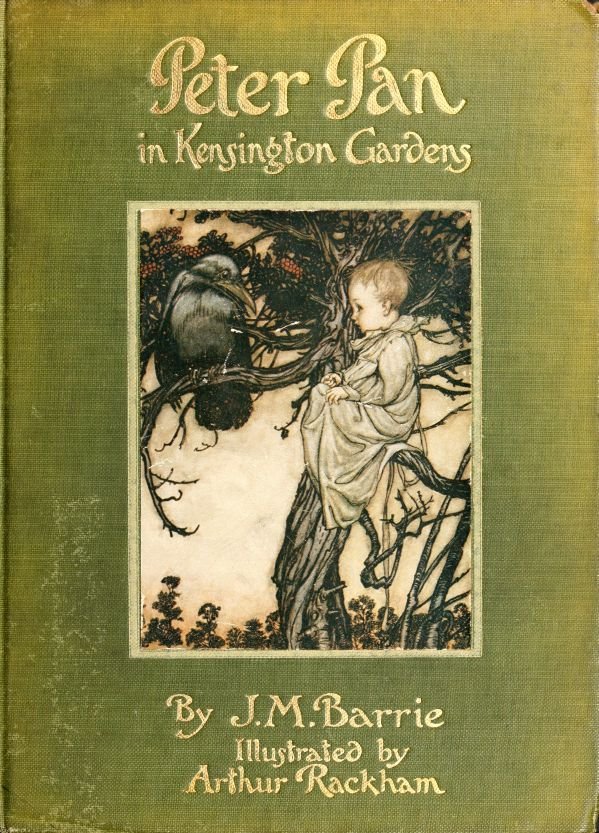Copyright: Never Judge a Book by its Cover!
I am often asked to licence book covers by educational publishers because they add another dimension to selected extracts and help to draw the student in. Their copyright can be complicated, so I thought I’d write a bit about them.
This beauty is one of my all-time favourites. Arthur Rackham died in 1939, so the illustration is now in the public domain (copyright lasts for the life of the author plus 70 years), but his work is only part of the picture. Assuming the designer of the cover was either employed or commissioned by the publisher, the copyright for the design has also expired as this edition was published in 1906 (if the work was created by an employee or was commissioned, the rule is 95 years from publication).
1906 Cover of Peter Pan in Kensington Gardens
The other thing to think about is who owns the digital file. If you own a copy of a book that is now in the public domain and take your own photograph of the cover, then all is fine. I found this image on Wikipedia, and it is noted as ‘public domain’, but the person who took the photograph of the cover is in theory, the copyright holder of the digital file. To make things even more complicated, there is some ongoing debate about this topic. Recent legal cases suggest that a photograph of a public domain image does not have any copyright in its own right unless the photographer has added something to the original image. This article has further interesting reading on the subject:
In addition to ‘out of copyright’, there is another exception under ‘fair dealing’ called ‘crit and review’ where it is possible to publish a book cover image alongside a review: ‘ Fair dealing with a work for the purpose of criticism or review, of that or another work or of a performance of a work, does not infringe any copyright in the work’ (Copyright, Designs and Patents Act 1988). Fair dealing however, isn’t a law, so applying it is subjective. If in any doubt, do check with your permissions editor before using a book cover in this way.
If you would like to use a book cover that is still in copyright, the first port of call is always the publisher. If the cover illustration was commissioned by the publisher, they will own the copyright. If the cover features one or more photographs however, the publisher may have licensed them from a commercial library, and you may need to relicence the photographs for your own requirements in addition to the cover itself. Another important thing to note is that if you own a copy of the book and take your own photograph, you only own the copyright for the digital file. The ‘embedded rights’ (the copyright for the design, the illustration and any photographs) will still require permission from the publisher and any additional third-party contributors such as photo libraries.
If you are a bookseller, it's good news! Publishers usually grant permission for book covers free of charge to market their book - they want to sell their books!
Sometimes you may find photographs of book covers available to licence from commercial photo libraries. Never assume embedded rights have been cleared by the library - they may be just licensing the digital file to you. Aways check with the library that these rights have been cleared with the book publisher because you may need to re clear embedded rights yourself.
As with the use of all third-party material, it’s always good to investigate things thoroughly before using. Manage your risk and if in doubt, invest in experienced advice from your friendly permission editor.
https://www.booksbysarah.co.uk/rights-and-permissions #copyright #rightsandpermissions #bookcovers #booksbysarah #educationalpublishing #authors #selfpublishing #permissionseditor #copyrightadvice

